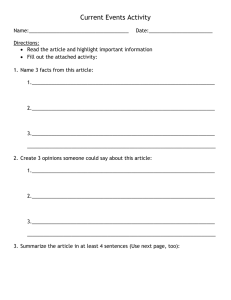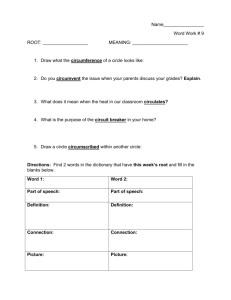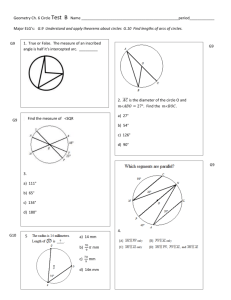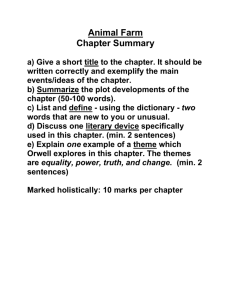Vocabulary Building
advertisement
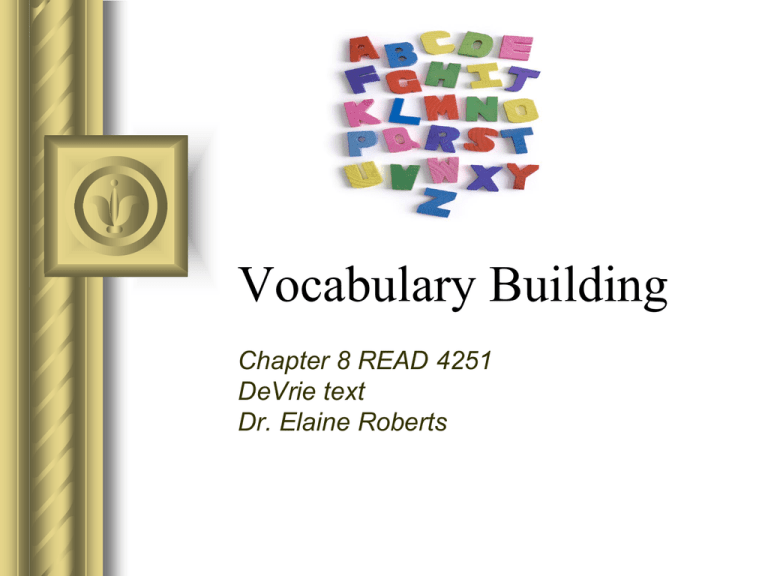
Vocabulary Building Chapter 8 READ 4251 DeVrie text Dr. Elaine Roberts What Teachers Need to Know about Building Vocabulary How proficient readers enrich their vocabulary How to assess vocabulary How to build struggling reader’s vocabulary Factors Influencing a Child’s Vocabulary Life experiences Vicarious experiences (videos, TV, movies, CD-ROMs, Internet, books, etc.) Direct instruction Five Ingredients for Direct Instruction of Vocabulary Words must be learned in context Words must be related to previous knowledge Words must be fully understood so students can use them in new situations Students need to use, hear, and see the words repeatedly Teachers need to enjoy learning new words Assessment of Vocabulary Informal assessment – Cloze tests – Maze tests – Zip tests Formal assessment – Standardized achievement tests – Group diagnostic tests – Individual diagnostic reading tests Lucy Calkins Twist on Vocabulary from her books, The Art of Reading and The Art of Writing Students profit from read alouds, book talks, book introductions with geared towards rehearsing and talking about words and concepts in a book Pronounce unknown word and replace it with a synonym that works in the same sentence (build webs of words that are synonyms) Hang onto meaning and take a “stab” at the meaning from context through life experience related discussions Students benefit more from extensive reading with vocabulary discussions related to author’s style rather than “kill and drill” The dictionary is for use after students try the above Graphic Organizer Demonstrating a Hierarchy of Word Relationships What Does This Checklist Reveal about Students’ Vocabulary? Language Experience Approach (LEA) for Vocabulary Instruction Reading, writing, and the other language arts are treated as interrelated Children’s experiences are used as the basis for the material used in reading and writing Share an experience with students Discuss what they have experienced Use technical terms during this discussion Serve as a scribe for students as they create webs about the experience Have the students dictate sentences about the experience Write the text in the exact way the students dictate it Have the students read the passage Discuss sentences that are awkward and change them For vocabulary instruction, have the students dictate a passage that includes new words and then read it Variations of the LEA Wordless books Science experiments Listening walk Schoolyard safari Cloud formations Object descriptions Strategies for Vocabulary Building Categorizing Possible Sentences Analogies Exploring word origins Crossword puzzles Synonym/Definition Concentration Wordo Concept of a Definition Strategies for Vocabulary Building (cont.) Scattergory Multiple Meaning Race Track Hink pinks Dictionary guide words Locating the correct dictionary definition Anticipation Guides (Voc and Comprehension) Personal Clue Cards Possible Sentences Based on New Vocabulary Literature Circles Enhance Vocabulary and Comprehension Heterogeneous groups read a book of interest and make connections, debate and challenge each other, and ask open ended questions – student centered Teacher is the floating facilitator and is usually not a member of any group First, model and practice the literature circle roles with emphasis on grand conversations for a week with student “tryouts” Daniel’s six roles (role sheets are online): 1. Artful Artist 2. Word Wizard (Word Id and Vocabulary) 3. Discussion Leader (themes, style, etc.) 4. Dramatic Reenactor (quotes, favorite parts) 5. Story Elements Correspondent (characters, place, plot, etc.) 6. Personal Connector Activity for the Literature Circle Strategy Select members for the Literature Circles Assign roles for the members of each circle Assign reading to be completed by the circles inside or outside of class Select circle meeting dates Help students prepare for their roles in their circle Act as a facilitator
